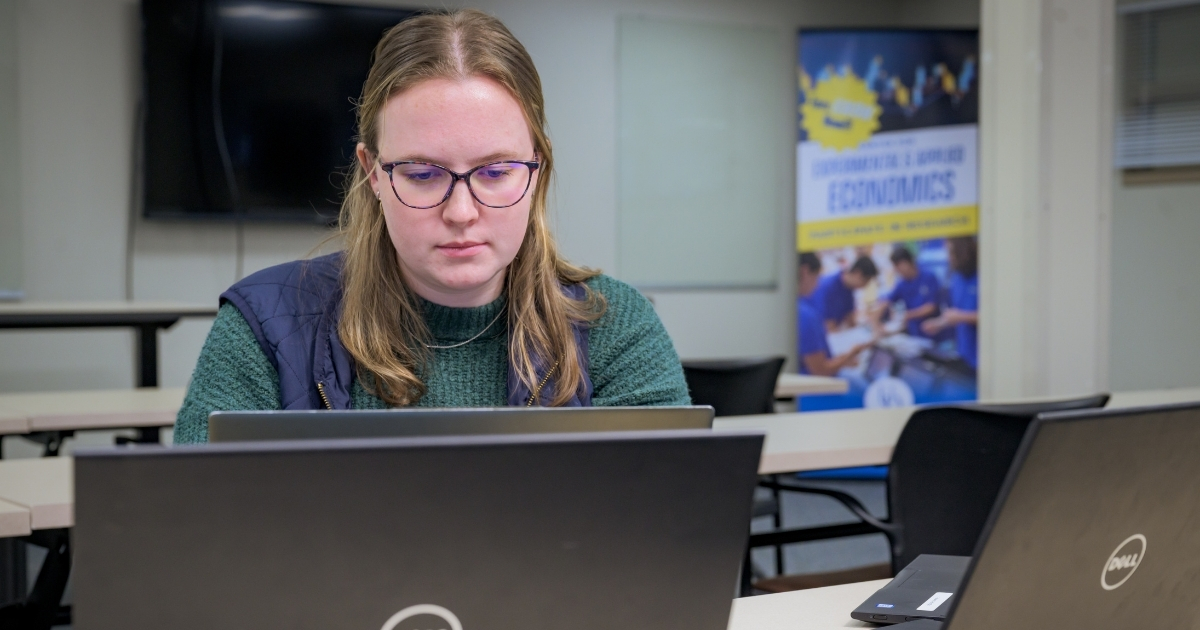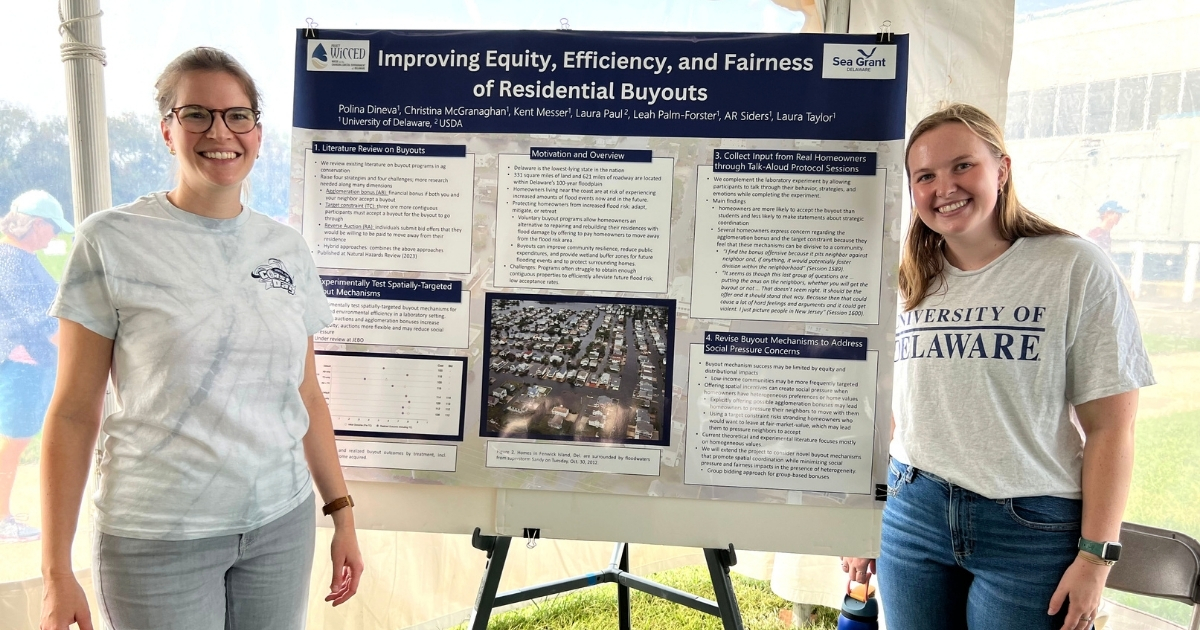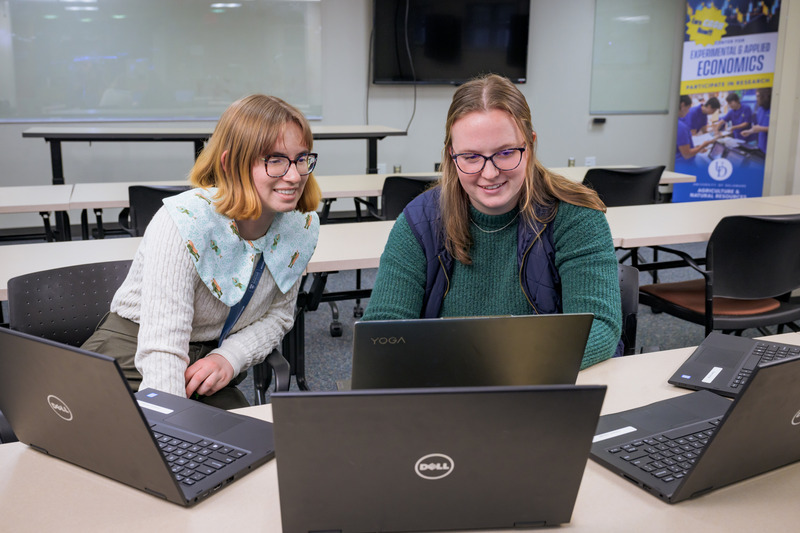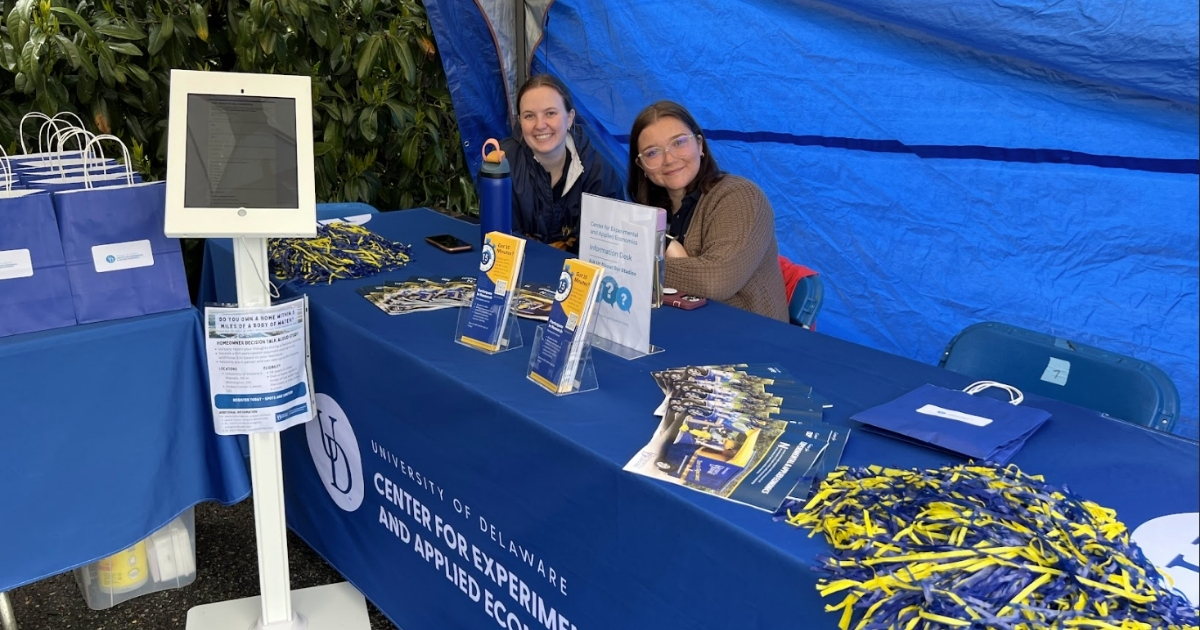
Category: Applied Economics and Statistics

Recovering the coast
April 16, 2024 Written by Molly Schafer | Photos by Evan Krape and courtesy of Laura Taylor
As the lowest-lying state in the United States, Delaware is vulnerable to sea level rise. Communities in coastal Delaware are feeling the effects in the form of storm damage and flooding. Laura Taylor, an agricultural and resource economics graduate student at the University of Delaware, says the problem is expected to increase over the next 100 to 200 years.
“There have been increases in rainfall and hazardous weather events like extreme flooding, hurricanes, and tornadoes,” Taylor explained. “It's a problem that’s increasing as the years go on.”
The cost of repeated repairs and safety concerns can lead homeowners to consider coastal buyout programs as a solution. Most buyout programs are partially funded by the Federal Emergency Management Agency (FEMA). In a voluntary buyout, homeowners have a choice. They can either accept the offer, usually for their home's fair market value (FMV), or decline. If a homeowner accepts and relocates, existing structures are removed, and the lot remains open space in perpetuity. Coastal buyouts provide an opportunity to restore wetlands and protect homeowners, but the programs often have low acceptance rates.
Taylor wants to help.
“I’ve heard from many people about how sea level rise and coastal buyouts have affected their communities,” she said. “It really puts into perspective how these problems are hurting people.”

Taylor, who also earned her UD bachelor’s degree in economics and environmental and resource economics with a minor in statistical data analytics, has been actively engaged with research since her sophomore year.
“Doing research has shown me that I can make an impact,” emphasized Taylor. “My ultimate goal is to help balance the world’s environmental and economic goals.”
Coastal buyouts allow the land to be returned to its natural function as wetlands. Wetlands provide a natural area for stormwater to go, holding and absorbing water that would otherwise pool on impermeable surfaces, like roadways, and cause flooding.
Taylor sees buyouts as a long-term adaptation strategy. Other methods, like building sea walls, elevating homes, and beach nourishment, may become too expensive for some communities to maintain in the future.
“Coastal buyouts can effectively protect homeowners from repeated and severe flood risk and move them out of harm's way," said Taylor.

She acknowledges that the decision to relocate is not easy for homeowners.
“People place a lot of personal value on keeping their home, their neighborhood, and staying in their school district,” underscored Taylor.
Her economic experiments study the financial decision-making process during voluntary coastal home buyouts and are funded by Delaware Sea Grant. Taylor also received a Gerald J. Mangone Climate Change Science & Policy Hub Graduate Research Enhancement Grant to test a new method to encourage coordination between adjacent homeowners who have become eligible for a flood-related buyout.
“The current approach to buyouts often evaluates them as individual decisions,” Taylor said. “This can leave neighborhoods fragmented, a checkerboard of houses and green space.”
Taylor says this outcome isolates the remaining homeowners with little benefit to the environment or the local community.
"When all the homeowners in a neighborhood agree to a buyout, the community can reduce infrastructure, utilities, and services like trash collection,” Taylor explained. “In effect, it reduces the operating costs of the town."
Larger areas of land can then be converted into wetlands, providing an important flood buffer for the rest of the community.
"Walking paths or playgrounds can be built on the converted lots, adding value to the community," Taylor noted.
An alternative approach that was introduced in New York, offers a financial bonus to groups of neighbors working together to create contiguous buyout areas. While coordination is desirable, Taylor says this approach can cause tension between neighbors.
Working with Prof. Christina McGranaghan, assistant professor in the Department of Applied Economics and Statistics, Taylor is testing a new approach that incentivizes group coordination while minimizing group pressure.
“Laura’s work will provide insight into how social pressure builds between neighbors under a common spatial coordination incentive,” McGranaghan said. “She will test a new approach that aims to achieve coordination without creating similar tension between neighbors.”
Taylor’s testing is conducted at UD’s Center for Experimental and Applied Economics (CEAE).
“CEAE has provided me with crucial resources,” Taylor emphasized. “The computers and software I use to shape my experiment, resources for working through my budget and help with paying participants.”
Taylor makes time outside the lab to interact with the coastal community. She presented the poster, “Improving Equity, Efficiency, and Fairness of Residential Buyouts,” at UD's annual Coast Day. The annual event on UD’s Hugh R. Sharp Campus in Lewes allows the public to engage with UD scientists and students.
“It was helpful to connect with people and talk about my thesis project and the bigger project that it's a part of,” said Taylor. “I could really see how people were affected by these issues.”
Of course, coastal buyouts can be controversial and not every response was favorable. Taylor acknowledged that hearing positive and negative takes on her project was helpful.
“I got really good feedback from the community,” Taylor continued. “How we can improve our research and make it even more applicable to real-life scenarios.”

